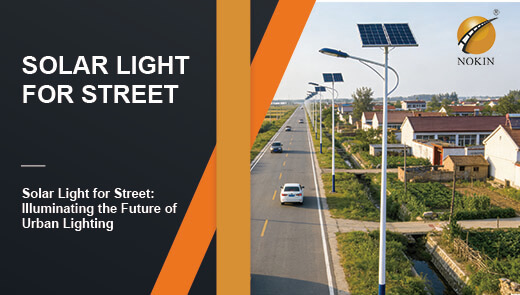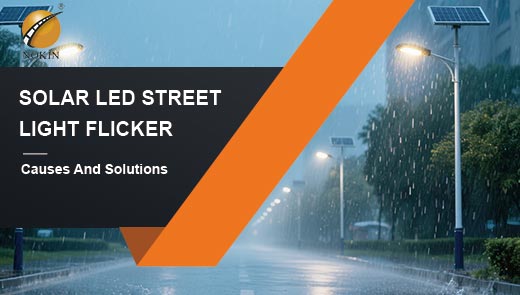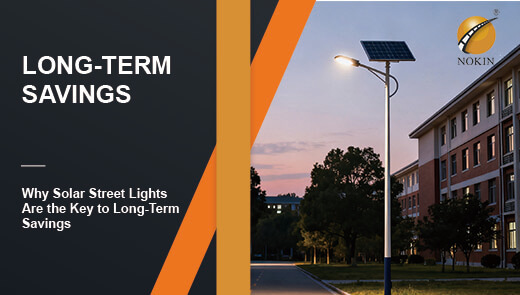Solar Street Light Uses and Deployments: 6 Things You Should Know
In today's global focus on sustainable development and energy transition, solar street lights have evolved beyond mere illumination tools into innovative solutions that balance environmental responsibility, economic efficiency, and practicality. Their deployment scenarios are increasingly diverse—from urban roads and rural paths to commercial complexes and private gardens. This article dissects the core knowledge of solar street lights across six dimensions: environmental value, product definition, classification types, key purchasing considerations, procurement techniques, and investment value. It empowers users with varying needs to make precise decisions.
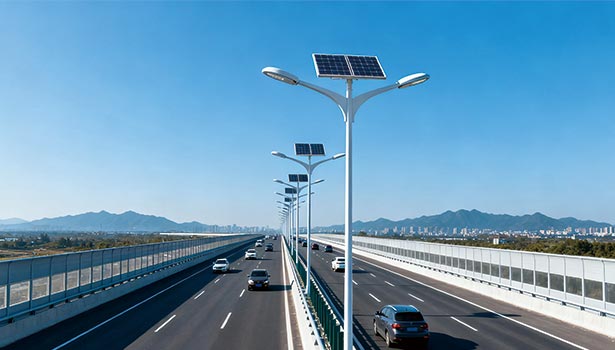
Using Solar Street Lights to Reduce the Carbon Footprint
The lighting industry ranks among the world's major carbon emitters, making energy-saving technology innovations crucial for carbon reduction. Climate Group data reveals that a full transition to LED energy-saving technology could cut over 1.4 billion tons of carbon dioxide emissions annually while eliminating the need to build 1,250 new power plants.
This prompted the organization to launch an initiative pushing for global public lighting to fully adopt LED technology by 2025. A 2017 study confirmed that modern lighting solutions already achieve annual carbon reductions of 570 million tons, including contributions from solar LED street lights. Solar street lights emerge as a primary carbon reduction force because they harness renewable solar energy, eliminating dependence on fossil fuel-based power generation. By severing the carbon emission chain at its source, they serve as a vital lever for green urban development and sustainable growth.
Definition of Modern Street Lights and Pollution Control Logic
Core Characteristics of Modern Street Lights
The defining feature of modern street lights is their “reliance on innovative energy sources,” with solar street lights serving as the quintessential example. They are not merely traditional street lights with added solar panels but integrated systems. Core components include solar panels, lamp posts, batteries, light sources, smart modules, and expansion components. Solar panels capture sunlight and convert it into electricity. The lamp post provides mounting support and structural stability. Batteries store energy to ensure nighttime illumination. Light sources primarily use LED or CFL diodes, balancing brightness with energy efficiency. Smart modules enable automated functions like light-sensing control and charge/discharge management. Expansion components are auxiliary accessories tailored for different scenarios. These components work together to form an efficient and stable lighting system.
Dual Logic of Pollution Mitigation
Solar street lights mitigate pollution through two primary mechanisms. On the energy side, solar power is a clean, renewable resource that generates electricity without emitting exhaust gases, wastewater, or waste residue, thereby avoiding the air pollution associated with traditional thermal power generation. On the usage side, LED or CFL light sources inherently feature low energy consumption and extended lifespans. Compared to traditional incandescent bulbs, they reduce energy consumption by 60%-80%, indirectly easing environmental pressures stemming from energy use.
Additionally, solar street lights operate independently of the power grid, making them particularly suitable for remote, off-grid areas. This eliminates potential ecological damage associated with grid construction, unifying environmental benefits with practical utility.
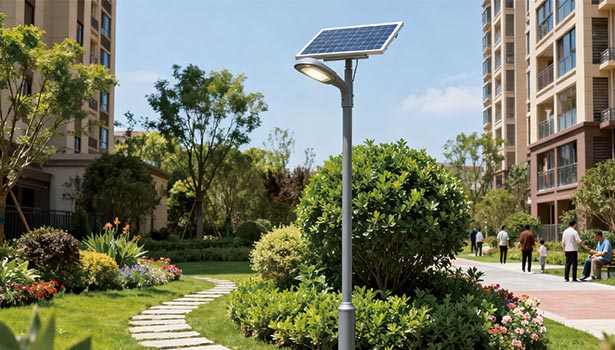
Types of Solar Street Lights: Main Classification
Solar street lights can be categorized into three main types based on component integration, each suited for different scenarios. Specific comparisons are as follows:
|
Type |
Structural Features |
Core Advantages |
Suitable Scenarios |
|
Solar panel, battery, LED lamp, and smart module integrated into a single unit |
Easy installation, compact design, sleek appearance |
Residential yards, small parking lots, sidewalks, rural roads |
|
|
All-in-Two Solar Street Light |
Solar panel and battery combined as one unit, LED lamp installed separately |
Highly flexible installation; solar panel direction can be adjusted for optimal sunlight |
Areas with uneven sunlight exposure or where adjustable lighting angles are needed |
|
Solar panel, battery, and LED lamp installed independently |
Greater performance optimization; each part can be positioned for best results |
Large industrial parks, main city roads, government projects, remote outdoor areas |
Buying Solar Street Lights: Key Considerations
Residential Users
Residential users primarily require lighting for courtyards, driveways, or small outdoor spaces. When selecting solar street lights, prioritize fundamental quality to ensure the product offers robust weather resistance—including waterproofing and wind resistance—suitable for complex outdoor environments. Installation ease is also crucial; opt for products featuring wireless, snap-on installation to simplify DIY setup.
Budget-wise, strike a reasonable balance between price and lifespan. Avoid choosing low-quality products solely for cost savings, as frequent replacements will ultimately increase expenses. Additionally, ensure the product's appearance complements the residential style to maintain overall aesthetic harmony.
Commercial Users (Businesses, Factories, Communities)
Commercial applications typically include parking lots, factory roads, and community public areas. These settings demand higher durability from solar street lights, requiring them to withstand frequent use and harsh environments. Customization is also paramount, requiring flexible adjustments to product parameters based on site size, required illumination duration, and other specific needs. After-sales service is indispensable; prioritize brands offering warranties and maintenance services to reduce long-term upkeep costs. Furthermore, high-efficiency solar panels and low-power LED light sources significantly enhance energy savings, minimizing ongoing operational expenses—a critical consideration.
Industrial / Government Project Users
Industrial or government projects typically involve large campuses, urban thoroughfares, rural lighting initiatives, and similar scenarios. When selecting products, focus on customized solutions to ensure compatibility with specialized requirements such as extended illumination periods, extreme weather resilience, and smart monitoring integration. Manufacturer credentials are critical—verify industry certifications and past project references to guarantee product and service reliability. Regarding product certifications, meticulously verify IP protection ratings, energy efficiency certifications, and quality inspection reports to prevent substandard products from compromising project quality. Long-term stability is a core requirement; prioritize market-proven products with strong reputations to minimize operational failure risks.
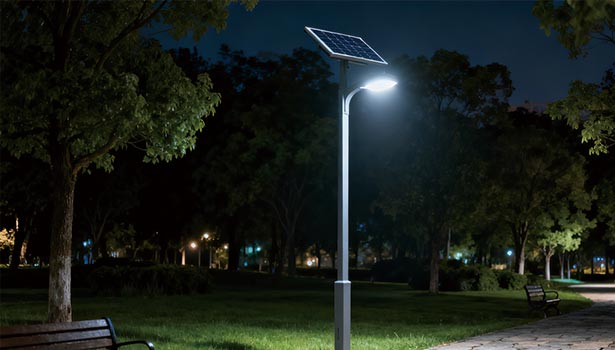
Tips for Purchasing Solar Street Lights
Select Models Purposefully to Avoid Over-Specification
During procurement, select models based on specific needs to avoid cost wastage from over-specification. Individual users need not pursue full-featured products; if existing poles are available, opting for a retrofit solution that replaces only the light source with a solar module offers better cost-effectiveness. For commercial users making bulk purchases, prioritize evaluating the manufacturer's installation service capabilities alongside the product itself. Complex installation processes increase labor costs and project timelines, impacting efficiency. Project users should coordinate with manufacturers in advance to arrange professional site surveys. Customized lighting solutions should be developed based on factors like daylight conditions and terrain characteristics to ensure precise alignment between product performance and application requirements.
Verify Manufacturer and Product Credentials
Manufacturer and product qualifications are critical for procurement quality. Prior to purchase, verify the manufacturer's track record, particularly projects in similar scenarios, to assess service capabilities and product reliability. Regarding product certifications, confirm that the products meet IP65 or higher waterproof ratings and possess international certifications such as CE/RoHS, as these certifications are vital guarantees of product quality. Additionally, clarify after-sales terms, including warranty periods, maintenance response times, and spare parts supply guarantees, to avoid situations where subsequent issues cannot be resolved promptly, leading to unnecessary losses.
So, are Solar Street Lights Worth the Investment?
Irreplaceable Practical Value
The investment value of solar street lights is first reflected in their significant environmental benefits. Aligning with carbon neutrality goals, they effectively reduce carbon emissions and environmental pollution, making them ideal for individuals and organizations prioritizing sustainability. Cost advantages are equally compelling: while the initial purchase price exceeds traditional street lights, they incur no electricity costs during operation and feature low maintenance expenses. LED lifespan reaches 5-10 years, while solar panels last over 20 years, delivering substantial long-term return on investment. Deployment flexibility stands as an irreplaceable highlight. Requiring no grid connection, they perfectly solve lighting challenges in remote areas and temporary sites. Furthermore, the application of smart modules enables automatic charging/discharging and fault alerts, reducing manual management costs and further enhancing practical value.
|
Consideration Factor |
Impact on Decision |
|
Local Sunlight Conditions |
Regions with abundant sunlight have higher power generation efficiency and stable endurance, making them a priority choice; areas with insufficient sunlight require larger battery capacity or auxiliary charging solutions. |
|
Initial Investment Cost |
The unit price is higher than that of traditional street lights, but with zero electricity bills and low maintenance costs, the price difference is typically recovered within 3–5 years. |
|
Application Requirements |
Ideal for remote areas without power grids; in urban areas with grid coverage, the focus shifts to environmental protection and energy-saving benefits. |
Solar street lights are particularly suitable for investment by three types of users. First, users in remote areas where grid connection costs are high or grid access is unavailable, as solar street lights can address lighting needs at a lower cost. Second, environmentally conscious individuals or businesses, as their clean, renewable energy attributes support achieving green development goals. Third, they are ideal for long-term usage scenarios. The initial investment premium can be gradually recouped through subsequent electricity savings and low maintenance costs, with the cost advantage becoming more pronounced over extended usage periods. Conversely, areas with short-term usage, minimal sunlight, or no access to backup power sources should exercise caution to avoid under performing investment returns.
The core principle for deploying solar street lights is “matching needs + balancing value.” Whether for small-scale personal installations or large-scale enterprise/government projects, understanding product types, key selection criteria, and procurement techniques enables solar street lights to deliver their triple value: illuminating spaces, saving costs, and protecting the environment. This provides sustainable lighting solutions tailored to diverse scenarios.

